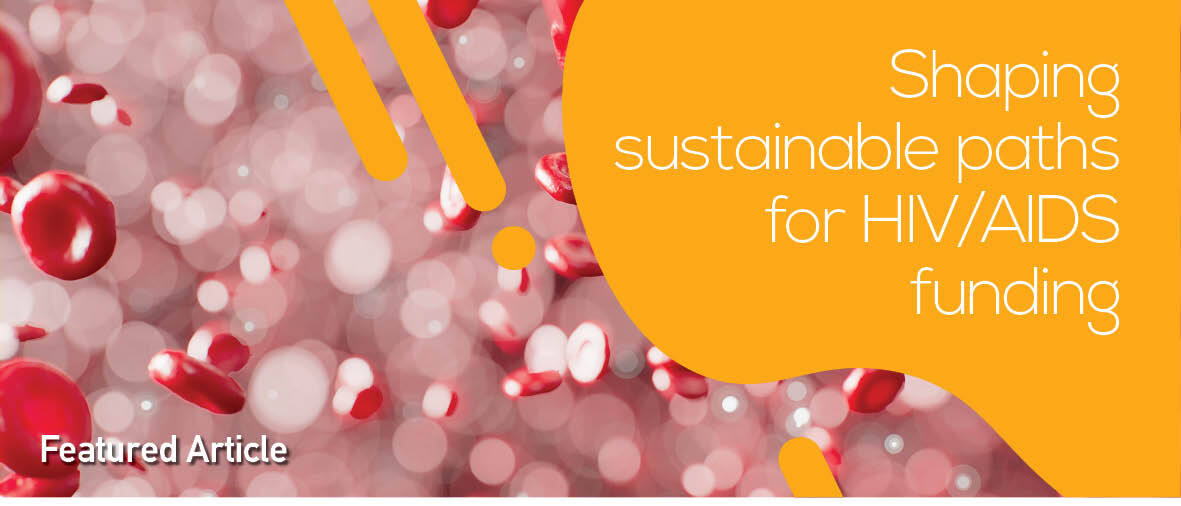Dear Editor,
In the coterie of challenges affecting global health, few chronic diseases have proven as persistent and devastating as the Human Immunodeficiency Virus/Acquired Immunodeficiency Syndrome (HIV/AIDS). This formidable, adaptable adversary of humans has starkly, year in, year out, highlighted the necessity for consistent and robust financial backing to combat its spread, its virulence and epidemiologic impact. However, the current global trajectory reveals a concerning trend: a diminishing commitment to funding this fight. The consequences of such a decrease are especially pronounced in Africa, a continent that bears a staggering 70% of the world’s HIV-positive population1. Today, roughly 40 million people across the globe are living with HIV, a disease that has been responsible for tens of millions of deaths1,2. Over the last decade, the funding pattern for HIV/AIDS interventions has been marked by volatility2. The early 2000s witnessed a commendable surge in global dedication and resources allocated to tackle the epidemic. This era saw nations and organizations rally together, reflecting a unified global determination1. Yet, more recently, there has been a troubling downturn in this commitment2.
The implications of this reduced funding are manifold and deeply concerning. First and foremost, treatment access, a lifeline for those living with HIV, stands to be compromised. Lifelong antiretroviral therapy (ART) is paramount for managing HIV/AIDS, and funding constraints can severely disrupt the supply chain, leading to debilitating medication shortages2,3. Beyond treatment, reduced funding can spike infection, morbidity and mortality rates4, directly impacting the lives of millions. Moreover, HIV/AIDS funds have historically played a pivotal role in fortifying broader healthcare systems. These funds have been instrumental in everything from essential training programs for healthcare professionals to infrastructure development⁵. A slash in funding can severely hamper these broader healthcare initiatives, potentially deteriorating the quality and access of integrated services3,5. Additionally, the broader societal and economic fabric is at risk. Vulnerable groups, often marginalized, stand to face intensified socioeconomic challenges6. The community of medical research and innovation, could also see setbacks. Such research, often on the cusp of groundbreaking treatments, prevention strategies, and vaccines, requires consistent funding4,5. A financial cutback can severely curtail these crucial advancements as a resultant effect4.
Reflecting on real third-world scenarios, South Africa provides a cautionary tale. A nation that was once at the forefront of HIV/AIDS interventions has witnessed the dire effects of funding cuts, resulting in medication scarcities that have affected countless lives7. On the other end of the spectrum, Uganda offers inspiration, underscoring the pivotal role of community-led initiatives to bridge funding gaps7. These two nations serve as examples for other African nations to emulate. To navigate these challenges, a multifaceted approach is essential. It demands strengthened international collaboration with stalwarts like the World Health Organization (WHO) and the United Nations Program on HIV/AIDS (UNAIDS), augmented public-private partnerships, grassroots community engagement, and meticulous fund utilization with an emphasis on transparency and efficiency. Moreover, directing substantial funds towards research can lead to more economical treatments, paving the way for greater affordability and access. Re-igniting the passionate global drive from the early 2000s can not only stimulate awareness but also rejuvenate funding streams.
As external HIV/AIDS funding commitments show signs of stagnation8, African nations are confronted with the imperative to bolster internal financing and resource mobilization. Even worse, AIDS is returning in many places, with at least 33% of HIV-positive people worldwide having a CD4 count less than 200 when starting antiretroviral therapy (ARV) treatment9. Therefore, a self-reliant and sustainable financing model for HIV/AIDS is not just a health prerogative but a pivotal element interlinked with economic and societal progress. The interconnectivity between health, economic development, and societal well-being accentuates the urgency for Africa to assume a frontline position in architecting a resilient, sustainable HIV/AIDS healthcare framework.
To further address the urgency, it is essential to highlight the novel insights into the funding crisis that extend beyond the discourse we are accustomed to. One critical aspect is the underutilized potential of leveraging digital health technologies10. Digital tools, such as mobile health platforms and telemedicine, can revolutionize HIV/AIDS care by enhancing treatment adherence, streamlining data collection, and improving access to healthcare services, especially in remote areas10. Investment in digital infrastructure could mitigate some of the adverse effects of funding cuts by optimizing resource utilization and improving healthcare delivery efficiency.
Another innovative approach involves engaging local communities more deeply in funding efforts. Microfinancing and community savings groups have shown promise in various health initiatives11. By empowering communities to contribute to and manage HIV/AIDS funding, a more sustainable and resilient financial model can be developed. This grassroots-level financial involvement not only mobilizes additional resources but also fosters a sense of ownership and accountability within communities.
Comparing different funding approaches reveals distinct advantages and limitations. Traditional models relying on international aid and governmental funding have provided substantial resources but often come with issues of dependency and instability. As seen in South Africa, funding cuts from international donors can lead to severe disruptions in healthcare delivery12.
On the other hand, public-private partnerships and corporate social responsibility initiatives offer alternative funding sources. Private sector engagement can bridge significant funding gaps and promote sustainable business practices that support HIV/AIDS programs. Companies can contribute by supporting prevention campaigns, funding research, and investing in healthcare infrastructure12. However, reliance on corporate funding can introduce market-driven priorities that may not always align with public health needs.
To sum it all, by developing internal, innovative, and sustainable financial mechanisms, Africa can ensure the continuity and enhancement of HIV/AIDS interventions. This approach is vital for safeguarding the health and future of millions, while also strengthening societal and economic structures. The integration of international support, strategic partnerships, and innovative autonomous financing mechanisms provides a robust and dependable foundation for a comprehensive and sustainable response to the ongoing HIV/AIDS crisis.


